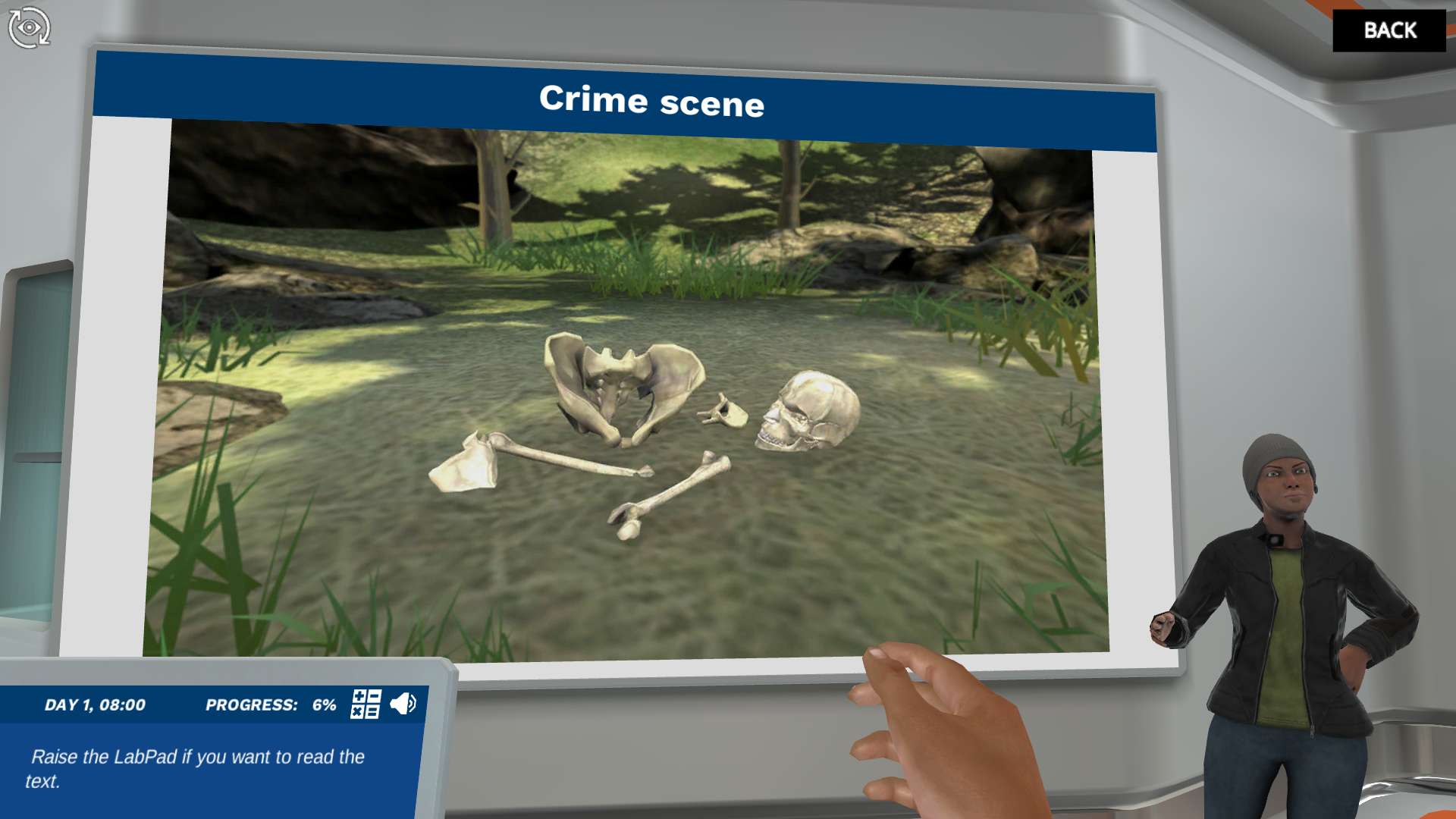Heading 1
Heading 2
Heading 3
Heading 4
Heading 5
Heading 6
Lorem ipsum dolor sit amet, consectetur adipiscing elit, sed do eiusmod tempor incididunt ut labore et dolore magna aliqua. Ut enim ad minim veniam, quis nostrud exercitation ullamco laboris nisi ut aliquip ex ea commodo consequat. Duis aute irure dolor in reprehenderit in voluptate velit esse cillum dolore eu fugiat nulla pariatur.
Block quote
Ordered list
- Item 1
- Item 2
- Item 3
Unordered list
- Item A
- Item B
- Item C
Bold text
Emphasis
Superscript
Subscript
About This Simulation
Learn about the skeletal system to help identify a series of bones and solve a missing person mystery.
Learning Objectives
- Broadly describe the major structure and functions of the skeletal system
- Differentiate the major types of bone by general structure and feature
- Identify the microscopic structure of compact and spongy bone and relate this to function
About This Simulation
Lab Techniques
Related Standards
- Early Stage Bachelors Level
- EHEA First Cycle
- FHEQ 6
- SCQF 9
- SCQF 10
- US College Year 1
- US College Year 2
- US College Year 3
Learn More About This Simulation
In this simulation, you will help a detective solve a missing person case by analyzing human bones that were discovered in a forest. Begin your investigation by learning about the skeletal system and the different types of bones. Then explore the internal anatomy of a bone to learn about compact and spongy bone. Over the course of your investigation, you will gather clues that will help you identify the unfortunate victim. Can your expertise help crack the case
Piece together the skeletal system
Detective Sherley Bones has brought the bones she found in a forest to the lab. With the help of Dr. One, you will arrange these bones into a skeletal system by identifying whether the bones are part of the axial or appendicular skeleton. Search for bone fractures in this skeletal system to discover more clues that can help you identify the victim.
Investigate the different types of bones
Continue your investigation by learning about the different types of bones that make up the skeletal system, including long, short, flat, irregular, and sesamoid bones. You will find that some bones can provide important clues to the sex and age of the victim. The detective will take notes of any clues, as well as the functions of the skeletal system that you learn.
Look inside a bone to help crack the case
Find the final clues by opening up a long bone and taking a close look at the compact and spongy bone tissue inside. Use the clues you find to match the bones to a missing person file. Will you be able to solve this mystery?
For Science Programs Providing a Learning Advantage
Boost STEM Pass Rates
Boost Learning with Fun
75% of students show high engagement and improved grades with Labster
Discover Simulations That Match Your Syllabus
Easily bolster your learning objectives with relevant, interactive content
Place Students in the Shoes of Real Scientists
Practice a lab procedure or visualize theory through narrative-driven scenarios


FAQs
Find answers to frequently asked questions.
Heading 1
Heading 2
Heading 3
Heading 4
Heading 5
Heading 6
Lorem ipsum dolor sit amet, consectetur adipiscing elit, sed do eiusmod tempor incididunt ut labore et dolore magna aliqua. Ut enim ad minim veniam, quis nostrud exercitation ullamco laboris nisi ut aliquip ex ea commodo consequat. Duis aute irure dolor in reprehenderit in voluptate velit esse cillum dolore eu fugiat nulla pariatur.
Block quote
Ordered list
- Item 1
- Item 2
- Item 3
Unordered list
- Item A
- Item B
- Item C
Bold text
Emphasis
Superscript
Subscript
A Labster virtual lab is an interactive, multimedia assignment that students access right from their computers. Many Labster virtual labs prepare students for success in college by introducing foundational knowledge using multimedia visualizations that make it easier to understand complex concepts. Other Labster virtual labs prepare learners for careers in STEM labs by giving them realistic practice on lab techniques and procedures.
Labster’s virtual lab simulations are created by scientists and designed to maximize engagement and interactivity. Unlike watching a video or reading a textbook, Labster virtual labs are interactive. To make progress, students must think critically and solve a real-world problem. We believe that learning by doing makes STEM stick.
Yes, Labster is compatible with all major LMS (Learning Management Systems) including Blackboard, Canvas, D2L, Moodle, and many others. Students can access Labster like any other assignment. If your institution does not choose an LMS integration, students will log into Labster’s Course Manager once they have an account created. Your institution will decide which is the best access method.
Labster is available for purchase by instructors, faculty, and administrators at education institutions. Purchasing our starter package, Labster Explorer, can be done using a credit card if you are located in the USA, Canada, or Mexico. If you are outside of North America or are choosing a higher plan, please speak with a Labster sales representative. Compare plans.
Labster supports a wide range of STEM courses at the high school, college, and university level across fields in biology, chemistry, physics, and health sciences. You can identify topics for your courses by searching our Content Catalog.















